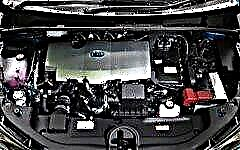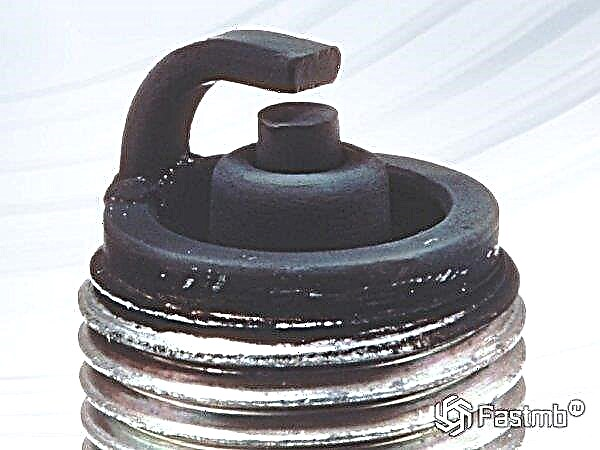Spark plug carbon isn't as bad as most car enthusiasts think. It allows you to "make a diagnosis" with high accuracy, and then take the necessary measures.

Before we start talking about what kind of carbon deposits can be on candles, we need to clarify a few points:
- It is necessary to check carbon deposits on new candles only after 200-300 km, preferably overcome along the highway. In this mode, the engine runs at approximately the same speed, and not to say that it could be called sparing.
- Before inspecting the candles, you need to make sure that carbon deposits are not the cause of low-quality fuel, it should be selected in advance.
- If the engine is carbureted, then first you need to set the ignition, adjust the idle speed.
Black carbon deposits on spark plugs: causes, remedies

First of all, you need to pay attention to what kind of soot it is. If it is removed with a finger or a rag, then not everything is so bad. The reasons for this phenomenon are quite simple and lie in the re-enriched mixture, and this is already a consequence of the following malfunctions:
- Mass air flow sensor (DMRV). The control unit of the injection engine has a program that adjusts the time that the injectors are open. So, in this program, the ratio of air to gasoline is prescribed, that is, the proportion of the combustible mixture. If the mass air flow sensor “does not understand” how much air passes through it, or if its readings are erroneous, then the control unit opens the injectors for too long. This causes more fuel to enter the cylinders, causing black carbon deposits to form on the spark plugs.
- Leaky injectors. In this case, a serious overconsumption of fuel will immediately be noticeable. That is, gasoline enters the cylinders even when the injector is closed. As a rule, all injectors do not fail at once, so a black spark plug will not be in every cylinder.
- Incorrect carburetor adjustment. This moment is relevant for carburetor engines, of course. This knot is quite complex, therefore, without the proper skills, you should not start self-adjustment.
In principle, there is no need to explain how to eliminate these faults, because they are already clear.

If the black carbon deposit on the spark plugs seems to have stuck, coked, then the reasons for its appearance are more serious:
- Worn valve stem seals. Here, too, it is quite simple to define. If bluish smoke comes out of the exhaust, especially under load, and the compression is normal, then it's definitely time to change them.
Troubleshooting methods are also clear here.
White spark plug: reasons

White carbon deposits on spark plugs are not as serious a problem as black ones. It is the cause of the lean mixture. That is, the engine runs “on air” with insufficient fuel. Owners of carburetor engines quite often deliberately make the mixture lean in order to save on fuel. In fact, a small amount of gasoline is compensated by a large amount of a combustible mixture that has to be supplied to the cylinders to achieve the same dynamics. Well, now let's see what the reasons for the white spark plugs on the injector might be:
- Leakage in the intake tract. Typically, the pipes crack in the area of connection with the flow meter (DFID), this leads to the ingress of "unaccounted for" oxygen. The engine control unit, on the other hand, supplies the cylinders with as much fuel as the flow meter has "taken into account", in accordance with the proportions.
- A normal mixture contains 15 kg of air and 1 kg of fuel vapor.
- Malfunction of the mass air flow sensor. Here everything is exactly the same as with the re-enriched mixture.
- Nozzles clogged. Usually they are clogged all together. This leads to the fact that for the same time in the open state, less fuel enters through the nozzles. In this case, you need to flush the nozzles.
Red carbon deposits on candles: reasons

The reason for the appearance of red carbon deposits on candles is, as a rule, overheating of the candle. It is dangerous by damage to the insulator, which means that the plug is out of order. Again, there are several reasons for the red soot on candles:
- The candles are incorrectly selected. They have their own glowing number, which indicates the temperature of work. The higher the compression ratio, the higher the temperature in the combustion chamber. Accordingly, "colder" spark plugs with a higher glow number are needed to avoid glow ignition.
- Ignition set too early. Again, only relevant for carburetor engines. Correctly set the ignition and the problem will disappear. In general, with early ignition, the engine cooling system does not do its job well.
- For injection engines, red carbon deposits on the spark plugs can cause the knock sensor to malfunction. In this case, the ignition is not corrected, and the engine works like a carburetor at early ignition - this was mentioned above.
- Another problem with an injection engine is the crankshaft position sensor. It takes readings from the shaft about the position of one or another piston in the cylinder, and the phase sensor determines the stroke of work. So, if such a bundle gives incorrect readings, then the result will be the same.
What color should the spark plugs be

And now let's not talk about malfunctions, but about how it should be. First of all, the spark plugs must be dry. Wet or oily coating of any color is a problem. Second, the normal color of the spark plug is brown. Slightly grayish, closer to brown. This color indicates that everything is in order with the engine.











